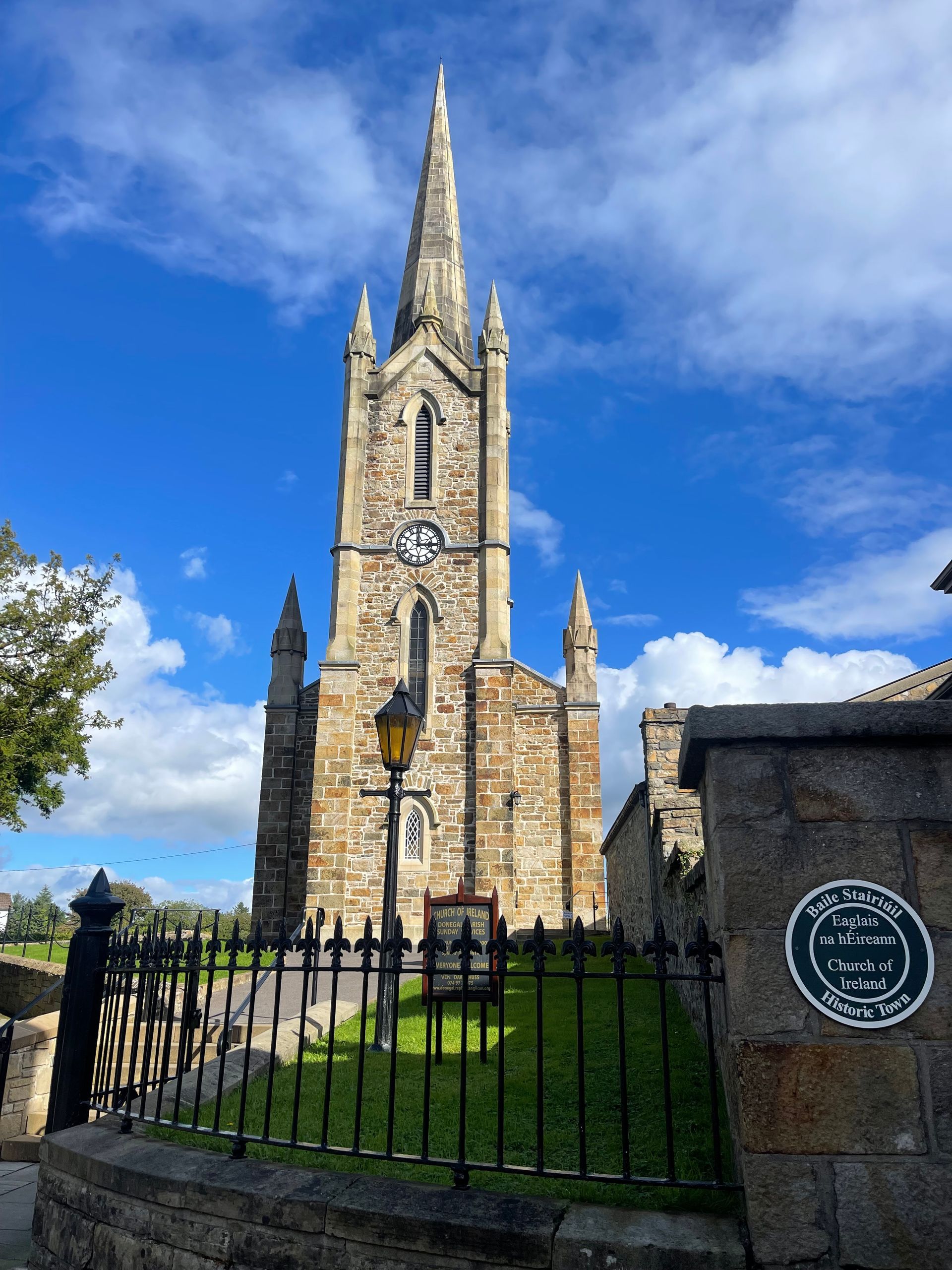Heritage Discovery Made Easy: A Friendly Guide to Exploring Your Genealogy
Allstop Travel
Let's dive into Heritage Travel.

Allstop Travel offers both tours we have crafted and tours through such Suppliers as Kensington Tours for your Heritage Journey's.
Having met cousins in Ireland, England and Scotland I personally have found it to be life changing. To share the cultures of my Ancestors and talk with those who's branch of the tree is so different, yet the same.
We look forward to helping you discover your heritage. Here are a few helpful thoughts on how and where to start.
Uncovering Your Family History
Delving into family history can feel like piecing together a captivating puzzle. It involves tracing lineages, understanding cultural backgrounds, and uncovering stories long forgotten. Whether you’re a curious beginner or a seasoned genealogist, starting with the basics is essential to your journey.
Begin Your Genealogy Journey *Starting your genealogy journey*
can seem overwhelming but breaking it into manageable steps will simplify the process. Begin by gathering information from family members. Conversations with relatives can provide anecdotes and details not found in records.
1. **Interview family members.** Ask about names, dates, and places. 2. **Collect documents.** Look for birth certificates, marriage licenses, and obituaries. 3. **Note oral histories.** These stories can guide you to resources or archives. Consider using free guides like [Ancestry's Free Research Guides] to develop a structured approach. As you collect data, remember to document sources meticulously for future reference.
Creating Your Family Tree Building a *family tree*
is like sketching a map of your heritage. Start with what you know—your immediate family—and expand outward. There are numerous online platforms to assist you, including Ancestry.com and FamilySearch. - **Use online tools. ** Digital platforms offer templates and storage for your tree. - **Verify information.** Cross-check details from multiple sources. - **Add photos and stories.** Personalize your tree with mementos and narratives. Visualizing your lineage can uncover connections and patterns, making your genealogical research both rewarding and insightful.
Using Historical Records **Historical records**
are vital in genealogy. They provide factual details that shape your family’s narrative. Start by accessing census data, military records, and immigration documents. These records can reveal occupations, addresses, and family structures. - **Census records** show household members and their ages. - **Military records** may include physical descriptions and enlistment details. - **Immigration documents** can trace your ancestors' journeys to new lands. Online databases, like those available through [The National Archives], offer extensive collections of these historical records.
Exploring DNA Ancestry DNA ancestry
tests have revolutionized genealogy, offering a scientific approach to understanding one's origins. These tests can confirm paper trails and uncover new familial connections. Understanding how to interpret your results is essential to this aspect of heritage discovery.
Understanding your genetic roots
involves interpreting the data from DNA tests. Companies like 23andMe and AncestryDNA provide insights into geographical origins and potential relatives. This *genetic genealogy* adds another layer to your family history. - **Ethnicity estimates** can highlight regional ancestry. - **DNA matches** might reveal unknown relatives. - **Health markers** may offer insights into familial health trends. For more information on genetic genealogy, you can refer to [The Family History Guide's section on DNA]
Interpreting DNA results
requires understanding complex data. Focus on ethnicity estimates and DNA matches but remember these are just pieces of the puzzle. They need to be combined with traditional research for a complete picture. 1. **Review ethnicity estimates. ** Consider how they align with known family history. 2. **Contact DNA matches. ** Communication can lead to new discoveries. 3. **Update your family tree.** Incorporate new insights from DNA data. For a comprehensive guide, [The Everything DNA Book] is a great resource for beginners.
Ancestor research is the heart of genealogy.
It's about diving deeper into the stories of those who came before us. This section focuses on tracing your heritage and connecting with living relatives.
Heritage Discovery **Tracing your heritage**
involves following clues left by ancestors. Utilize records, stories, and DNA matches to map out your lineage. Visit local archives or historical societies to uncover hidden gems. - **Research local archives.** They may hold unique documents. - **Explore historical societies.** These can provide context and detail. - **Visit ancestral locations.** Walking where your ancestors walked can be profound. Combining these approaches ensures a holistic understanding of your family's past.
Connecting With Relatives living accounts and personal documents that enrich your family history. Consider reaching out to distant cousins or joining family reunions. - **Use social media. ** Platforms like Facebook can connect you with relatives. - **Attend family events.** Reunions are perfect for gathering information. - **Share your findings. ** Encourage others to contribute their knowledge. Building these relationships can open doors to new information and strengthen familial bonds.

💀 The Meaning Behind the Marigolds Each November 1–2, Mexico blooms with cempasúchil (marigolds), flickering candles, and music as families gather to honor loved ones. Día de los Muertos — the Day of the Dead — is a celebration of life remembered, not death mourned. Ancient Aztec beliefs combine with Catholic All Saints’ and All Souls’ Days to create a joyful ritual of reunion. Altars (ofrendas) overflow with flowers, favorite foods, and photos, inviting spirits to return for one more night of laughter and light. 🌆 Where to Experience Día de los Muertos 🕯 Oaxaca Watch candlelit parades, sand art, and brass bands weave through cobblestone streets in one of Mexico’s most traditional observances. 🎉 Mexico City The capital’s Mega Desfile (Grand Parade) dazzles with floats and costumes that inspired the Pixar film Coco. 🌊 Pátzcuaro, Michoacán Witness island vigils on Lake Pátzcuaro as candlelight dances across the water from Janitzio. ☀️ Riviera Maya & Cozumel Combine culture and relaxation — from resort-hosted workshops on skull painting to ancient Maya rituals honoring ancestors by the sea. 🎭 How to Celebrate Respectfully Observe gently: Ask permission before photographing altars or ceremonies. Shop local: Choose hand-painted skulls and embroidered textiles crafted by Indigenous artists. Taste tradition: Try pan de Muerto and atole from neighborhood bakeries. Join with heart: Many communities welcome visitors into parades and public celebrations — listen, learn, and celebrate with respect. 🌺 Why Travel in Early November November brings mild weather, smaller crowds, and authentic connection before peak winter season. Whether strolling through Oaxaca’s candlelit streets or relaxing seaside after a festival in Playa del Carmen, this is Mexico at its most colorful and heartfelt.

Creating a Family History Book One meaningful way to preserve your findings is by creating a family history book. This can be both a personal project and a treasure for your family. Here’s a quick guide on how to get started: Organizing Content: Begin by outlining the main sections of your book. These could include family tree charts, biographies, significant events, and ancestral town histories. Writing Narratives: Turn the data into engaging stories. Share anecdotes, cultural practices, and how historical events shaped your family’s journey. Incorporating Visuals: Integrate photographs, scanned documents, and maps to bring your narrative to life. Design and Format: Utilize online tools or professional services to format your book. Pay attention to layout and readability to make it visually appealing. Printing and Distribution: Decide whether you want to self-publish or use a print-on-demand service. Share copies with family members to ensure the legacy is preserved. Engaging the Younger Generation To ensure your family’s heritage continues to be celebrated, engage the younger generation. Here are some creative ideas: Interactive Family Tree Projects: Use digital tools to create an interactive family tree where younger family members can explore their ancestry. Storytelling Sessions: Host family gatherings where stories are shared. Encourage younger members to ask questions and share their thoughts on family history. Heritage Tours: Plan a family trip to ancestral towns. Experiencing the places firsthand can foster a deeper appreciation for their heritage. Hosting a Family Reunion Consider organizing a family reunion centered around your genealogy discoveries. This event can be an opportunity to reunite family members from various branches and celebrate your shared history. Plan activities that highlight your research, such as: Genealogy Workshops: Offer sessions where you can teach others how to start or continue their research. Cultural Activities: Include traditional food, music, or games that reflect your German heritage. Presentation of Your Findings: Share a presentation of your research, featuring stories, photos, and any surprises uncovered along the way. What’s Next in Your Ancestry Journey? Your genealogical research journey doesn't have to end here. There are endless possibilities to explore further: Exploring Other Lineages: If you have multiple ethnic backgrounds, consider researching other branches of your family tree. Documenting Oral Histories: Continue collecting stories and memories from older family members. Document these to preserve living history. Advancing Your Skills: Attend genealogy conferences or online courses to refine your research techniques. Continuing the Legacy As you reflect on your journey into your German ancestry, remember that genealogy is more than just names and dates. It's about the stories, the connections, and the legacy you build for future generations. Keep the curiosity alive, and let each new discovery deepen your appreciation for your family's unique story.

